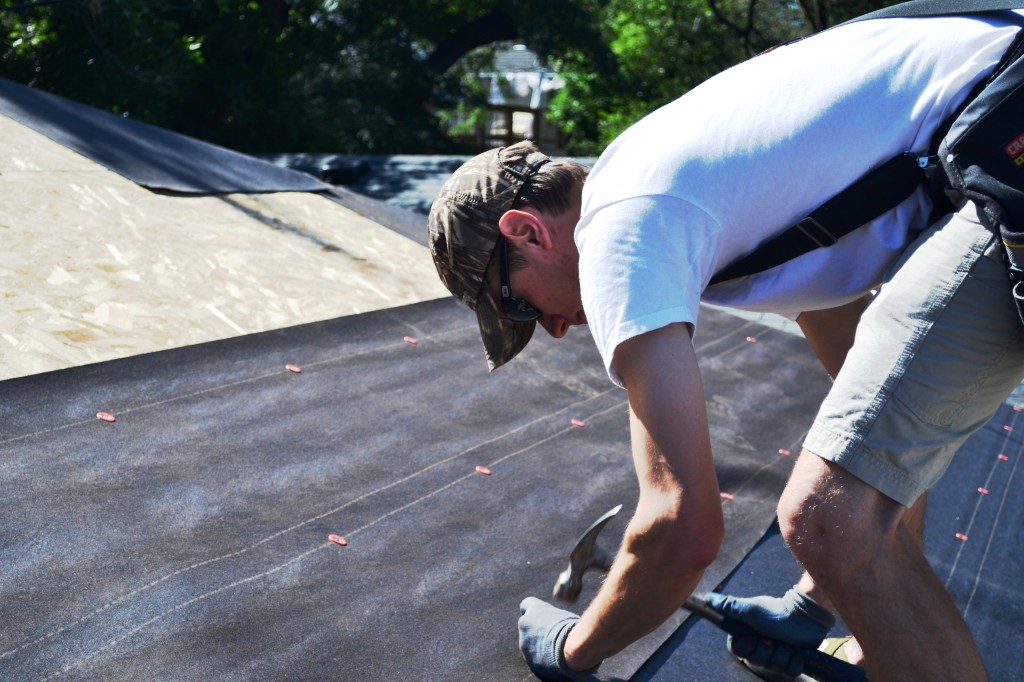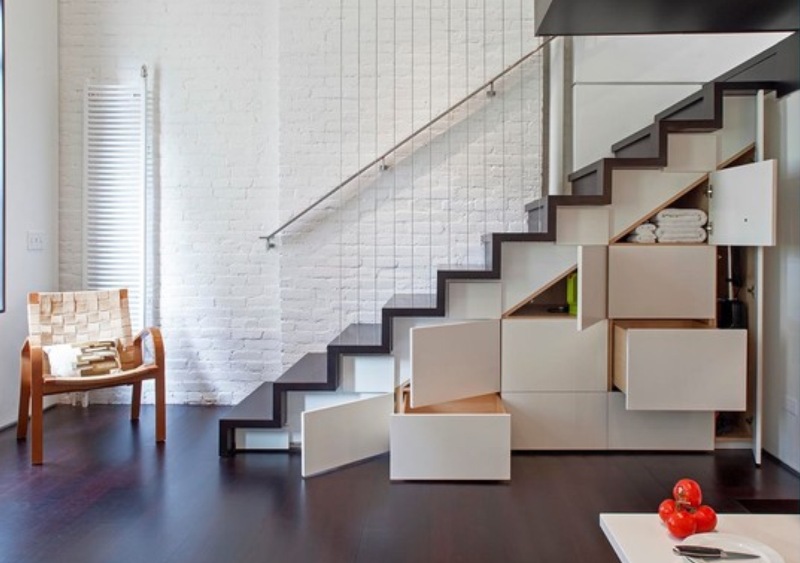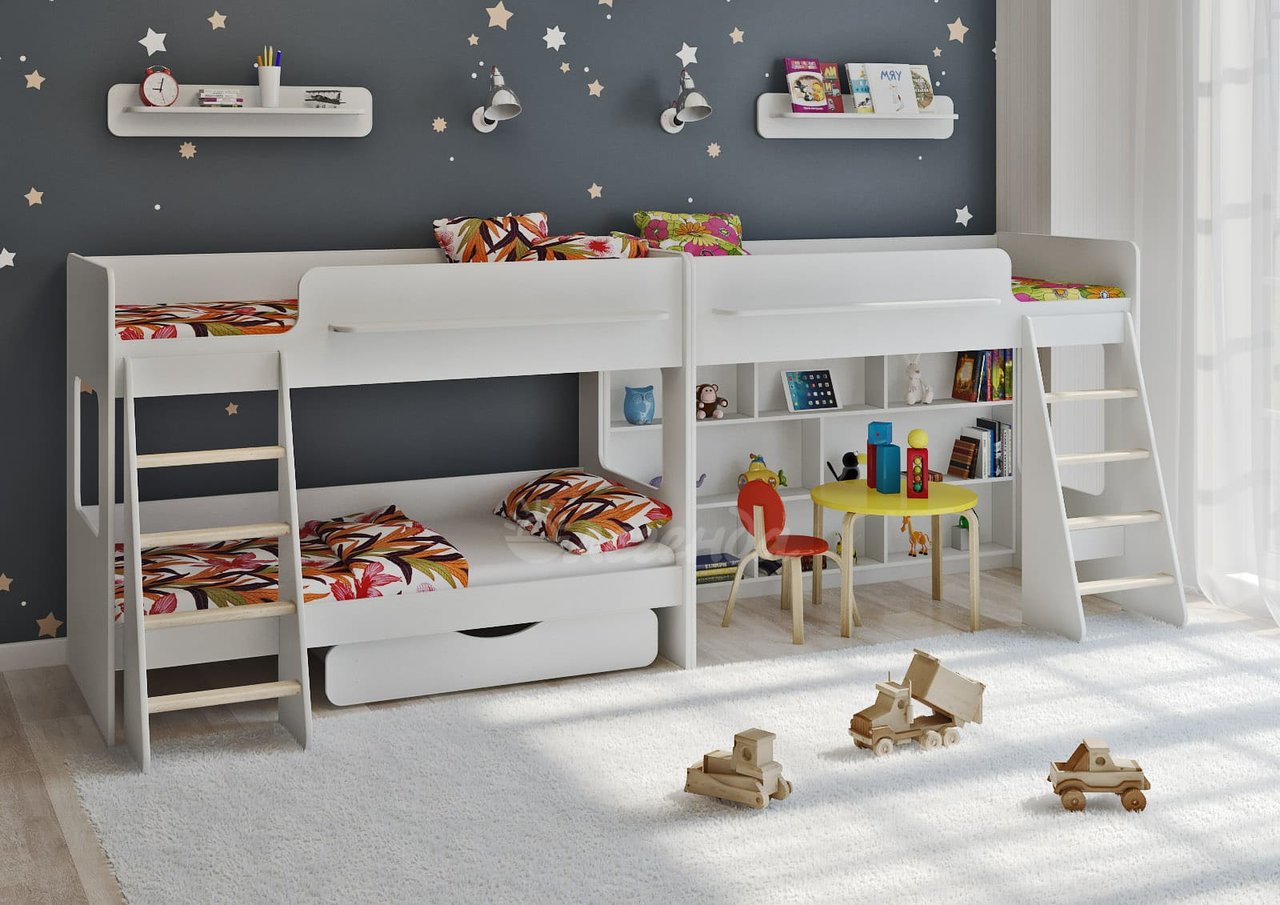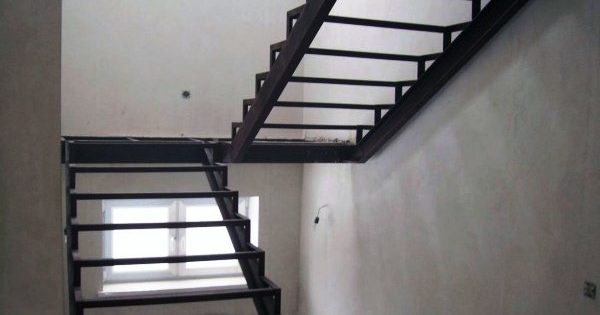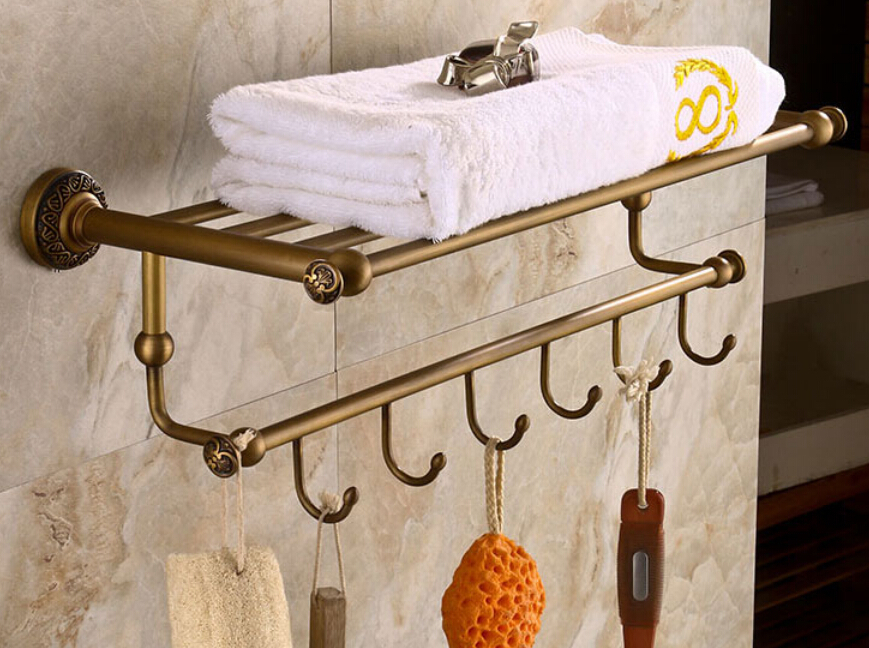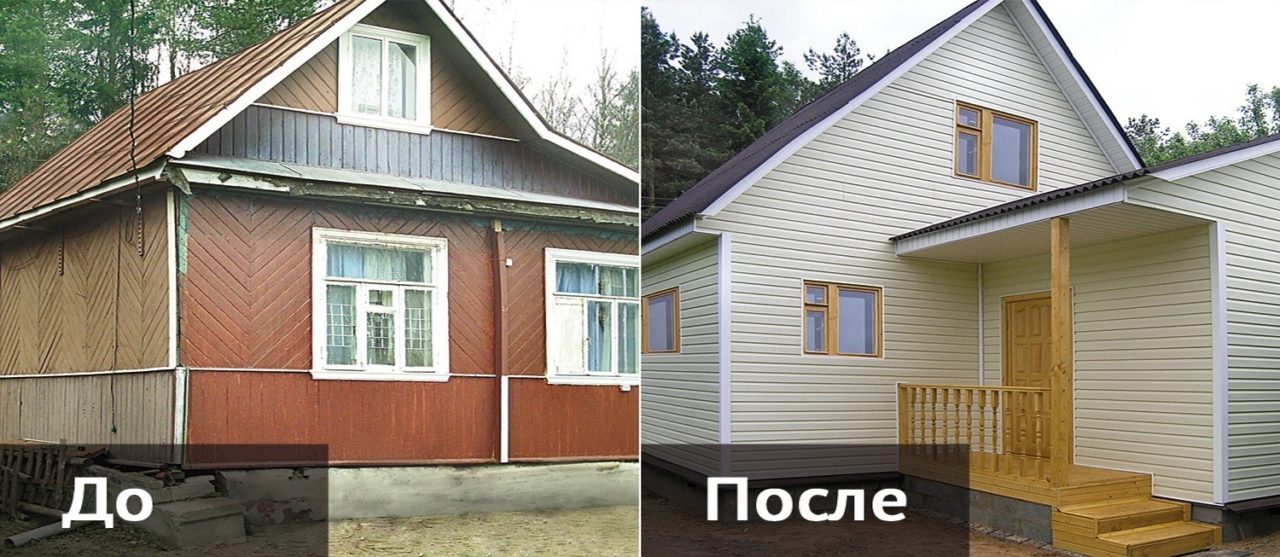7 tips for finishing concrete stairs in the house and on the street
A staircase is an integral element of any multi-story building. Whether it is a private residential building, a shopping or entertainment center, a general educational or preschool institution. Depending on the features of the room and the style of its design, the staircase can be made of different materials. The most popular are wooden and metal constructions. However, concrete spans still remain more affordable, but no less practical and durable. Despite the high operational characteristics, the aesthetic component in this case leaves much to be desired. Bare concrete is difficult to “fit” into any interior, of course, if it’s not about everyone you love loft. This raises the main question - what is then advisable to perform facing? In this article we will list the most suitable materials for finishing the concrete staircase, both in the house and on the street and we will figure out which factors to consider when choosing.
Material requirements
Before proceeding with the choice of the finishing material itself, it is necessary to understand that the staircase is that element of architecture that has a regular, intense load. This is especially true for stairs located outside the building. By the way, the layout itself also plays a very important role. Therefore, to the facing material for internal stairs such requirements are put forward:
- Firstly, it should not add too much weight to an already massive element. Typically, the stairs located in the house, as it were, "hang" in the air. This already makes them experience tremendous stress. And imagine, if you put natural marble on the steps? Yes, and add to this the weight of the adhesive ...
- Secondly, most often the staircase is an adornment and almost the main element of the interior. Especially when it comes to a private home or cultural institution. Accordingly, the finishing material should emphasize the beauty of its shape, if it is non-standard, or at least harmoniously fit the general finish;

- Also, do not forget that the staircase is a traumatic place, especially for children and the elderly. So, the finishing material must be safe - not slip. In the ideal case, before proceeding with the decoration, it is necessary to provide for the illumination of steps. Of course, this recommendation is purely individual;
- If worth task to save as much money as possible at this stage of the work, then in addition to maintainability, you need to think about whether self-laying of the selected material can be performed. Consideration should also be given to the costs of acquiring or renting specific equipment that may be needed in the process. For example, a stone grinding machine or tools for cutting hard porcelain tile;
- An important role is played by the ability to perform local repair or replacement of the coating, for example, at one stage in which case;
- It is also worth considering the noise insulation properties of the material. The best in this regard will be carpets or wood;

- If the house has allergies, pay attention to the hypoallergenic material. However, this applies to all finishing materials in this case;
- The "warmth" of the material is also important for stairs located inside the house. To walk barefoot on the tile is hard and cold, and on the laminate it is much more pleasant;
- This recommendation applies not only to internal stairs, but also to external ones - the material should have a high level of wear resistance and abrasion.
Concerning stairs located outside of buildings:
- Most importantly, the material must be resistant to adverse environmental factors: sudden changes in temperature, frost, constant exposure to ultraviolet radiation;

- You also need to remember about possible moisture. If water is absorbed deep into the material, after some time this will lead to its destruction. Moisture can penetrate through the pores. It follows that the surface of the material should be smooth and holistic;
- Regarding mandatory availability anti-slip coating We have already said, but in addition to this, there is, for example, ceramic tile, on the surface of which there are special notches or cuts designed to enhance the effect.
Concrete staircase painting
We begin our review, perhaps, with the simplest and most affordable material - paint on concrete. If now in your head an association with painted steps in old buildings of the USSR times instantly arose, then do not rush to draw conclusions.  Technology has long gone a long way since then, and today paintwork not only can look pretty decent, but also manifest high performance:
Technology has long gone a long way since then, and today paintwork not only can look pretty decent, but also manifest high performance:
- Staining with several thin layers allows you to create a strong, monolithic coating on the concrete surface, which in addition enhances the strength of concrete. As a result, the life of the entire structure is significantly extended;
- Modern paint and varnish compositions have high adhesive properties, do not exfoliate and are well distributed on the surface of the base. Of course, in order to achieve this effect, it is necessary to thoroughly clean the concrete from dust, grease stains and other contaminants. But on account of the need for preliminary coverage primer, you need to consult a hardware store, or carefully read the recommendations of the paint manufacturer on the package;
- Final coating is elastic. This prevents the possibility of cracking, and also provides small cushioning properties;

- The abrasion rates of the painted surface are very high. Even if several years later obvious signs of exploitation appear on it, it will not be difficult to restore the original appearance;
- Choosing a paint with certain additives, you can create a coating with anti-slip effect;

- The color palette of the compositions is quite wide. Having shown imagination, you can paint the stairs in such a way that one look at it will cheer you up;
- Some formulations can even out surface irregularities. But regarding the maximum difference, you should also ask the seller or try to find information on the bank;
- The coating can be frost and moisture resistant;

- And the most pleasant thing for housewives - to clean and wash the stairs, faced in this way, is a pleasure. Firstly, the coating is often resistant to various household chemicals. And secondly, it is seamless, which means that you don’t have to work hard to sweep out small debris from joints or seams.
Concerning disadvantages then there are only two of them:
- No matter how bright and attractive the painted staircase looks, it is still undesirable to choose this method for facing the main march. To put it mildly, the staircase will look too simple and modest;
- If the surface of the concrete is so uneven that even several layers of paint cannot hide it, additional leveling may be required. And this is an additional cost. Of course, you can leave it as it is, but be prepared that the flaws will be noticeable.
 Painting is an excellent, quick and budget option for finishing staircases leading, for example, to utility rooms or a basement, or spans in public buildings. About which formulations are suitable for application on a concrete surface, on our website There is a separate article.
Painting is an excellent, quick and budget option for finishing staircases leading, for example, to utility rooms or a basement, or spans in public buildings. About which formulations are suitable for application on a concrete surface, on our website There is a separate article.
Choose carpet or linoleum
Another affordable material is carpet. Moreover, manufacturers have provided such an option for using the material and created a special carpet with rubber base. Lay down and you can fix the material to the flight of stairs two ways:
- By applying a special adhesive;
- Or with the help of decorative corners, which are mounted at the base of each step with screws, thereby fixing the canvas and clearly repeating the contours.

The benefits this finishing material has enough:
- It is very pleasant to the touch;
- The coating is warm and comfortable, which you especially appreciate in the cold season;
- In addition, it provides the proper level of sound absorption;
- You can choose a canvas with different pile length and its thickness. However, for reasons of practicality, lint-free varieties, that is, looped canvases, are often chosen. Cleaning in this case is much easier;
- The cost of carpet is quite affordable;
- A variety of colors, as well as the ability to choose products with an interesting print, makes the finish harmonious and attractive;

- The carpet goes well with various decorative overlays. For example, with corners that are attached to the outer corner of the steps. Corners simultaneously perform two functions in this case - they prevent slipping of the coating in the absence of an adhesive layer and complement the overall design;
- This type of coating is not attractive to various microorganisms, so you don’t have to worry that after laying someone will “start” under it;
Laying the carpet on the steps can be done independently. The main thing is to pre-deploy the roll of the coating and let it rest and straighten under its own weight. It usually takes no more than a day. Concerning disadvantages:
Concerning disadvantages:
- Most of the front part of the coating is made of synthetic material. Because of this, if you accidentally slip and “drive” along the carpet, you can easily comb the top layer of the skin and get a kind of burn;
- Some note low wear resistance material. However, in this case there is the possibility of simply making the wrong choice. After all, it is not for nothing that manufacturers indicate the wear resistance class and in which rooms the installation is intended. For example, if you choose from a household carpet, then you need to pay attention to 23rd grade - for rooms with high traffic (corridors, hallways). You can also choose from options for commercial carpet. Then you should pay attention to 33 class - for rooms with a constant flow of people passing (halls, corridors).

You can’t write off such type of coverage as linoleum. It is best suited for laying on stairs indoors. However, in the case of linoleum it is still better to use special glue and additionally fix the material with decorative corners. Also, you should not choose an overly dense look, otherwise you simply will not bend it in the form of steps. And the rest, both in cost and in operational characteristics, linoleum is in no way inferior to carpet. Unless its longevity can be higher.
Facing a concrete staircase with a laminate or parquet board
Another suitable option for finishing the stairs is laminate or parquet. These materials are also excellent heat and sound insulators. Laminate can have a thickness of strips from 6 to 12 mm. In this case, when choosing, you must be guided by the rule, the thicker the better. This will provide both easier installation and higher reliability and durability of the coating. Another important recommendation - choose the laminate is better from the commercial series. Its laminated surface has a thicker protective layer, which provides higher abrasion rates. In the ideal case, the width of the panel will be equal to the depth of the step.  Under such conditions, finishing yourself will be the easiest. If the bar is a little wider, it doesn’t matter. It is easy to give it the right size with an electric jigsaw. But narrower trims in this case will not work. There are several ways of attaching a laminate or parquet to the steps, however gluing the material directly to concrete is considered less time-consuming and faster. For work, In addition to the finishing material, we will need:
Under such conditions, finishing yourself will be the easiest. If the bar is a little wider, it doesn’t matter. It is easy to give it the right size with an electric jigsaw. But narrower trims in this case will not work. There are several ways of attaching a laminate or parquet to the steps, however gluing the material directly to concrete is considered less time-consuming and faster. For work, In addition to the finishing material, we will need:
- Edge profile, the required amount of which is easy to calculate by measuring the length of the step and multiplying the value by the number of steps;
- Decorative overlays on a profile;
- Self-tapping screws and dowels;
- Screwdriver;
- Special glue.
It is very important to leave the facing material in the printed state in the room where the facing will be done, at least for a day.  This is necessary so that he regains working temperature, acclimatizes, so to speak, becomes more flexible and does not burst. Himself process highly plain:
This is necessary so that he regains working temperature, acclimatizes, so to speak, becomes more flexible and does not burst. Himself process highly plain:
- Pre-concrete surface is leveled, cleaned and primed;
- First of all, the edge profile, which is made of aluminum, is glued. Moreover, on one of its surfaces there are holes for screws. This part should go to the lower stage. Glue is applied only to the edge of the upper step. Then, holes are drilled at the location of the aforementioned holes, a dowel is inserted and a self-tapping screw is screwed. In no case should the self-tapping head protrude over the profile;

- Next, the glue is applied to the laminate plate, which is glued first to the upper plane of the step, and then to the end. In addition, there are protrusions on the profile that repeat the shape of the laminate lock. Therefore, the locks on the slats should be located accordingly. And after gluing them, it is also necessary to snap them together;
- Make sure that excess glue does not protrude anywhere. If necessary, remove them with a damp cloth;
- At the end, glue is applied to the decorative overlay that covers the aluminum profile.
- For clarity, watch the video:
Benefits this type of finish:
- Use of natural, safe materials for health;
- Possibility of self-installation;
- Maintainability of the coating;
- A variety of colors and textures of the laminate;
- Simplicity of leaving;
- Soundproofing;
- Low weight;
- High thermal insulation characteristics;
- Affordable cost;
- Full imitation of a real tree;
- Possibility of selection for any interior.
Finishing stairs with ceramic tiles or porcelain tiles
This finishing method fits as for cladding stair spans inside like that outside the premises. In addition, to date, many manufacturers offer ready-made collections specifically designed for laying on steps. Their characteristic difference is the availability shaped parts:
Their characteristic difference is the availability shaped parts:
- Tread;
- Edges;
- Risers;
- Railing;
- Skirting boards.
And if your staircase has a more or less standard configuration, it will not be difficult to select elements that are suitable in size. And even if its shape and intricate, many companies will go to meet you and produce parts on an individual order. True, the cost of such a solution can be quite tangible.Despite the fact that tiles can be laid outside, you should not think that absolutely all the material is able to adequately withstand the vagaries of nature. Evidence that your chosen series is really designed for operation. In the open, a snowflake on the packaging will testify. This suggests that the material is frost-resistant. So that there is no doubt at all, give preference to porcelain stoneware. But it is better to refuse laying it inside the building because of its considerable weight. The process of laying tiles on the steps follows the same scheme as the process of facing a flat floor. TO the benefits this finishing method can include:
- System compatibility warm floor. In fact, the same laminate can be laid on top of a warm floor, however, due to the very low coefficient of wood, such a solution would be inappropriate. A carpet or linoleum is better suited infrared mats. Therefore, in the case of using "traditional" electrical systems, tiles will be the best solution;
- Durability and wear resistance;
- Resistance to various household chemicals, which makes the cleaning process quick and easy;
- The ability to purchase tiles with anti-slip coating;
- Possibility of self-installation;
- Resistance to moisture;
- Affordable cost.

TO disadvantages can include:
- Possible difficulties when facing steps of intricate shapes. In the case of self-finishing, this fact will simply make the work longer and more time consuming. And if you turned to a professional tiler for help, he will certainly require a higher reward for this;
- When decorating spiral staircases, you get a very high percentage of waste associated with widespread pruning. Therefore, for such spans it is better to choose a different type of finish;
- Extreme surface rigidity;
- Significant weighting of the structure;
- The lack of an atmosphere of warmth and comfort due to the natural coldness of the surface.
Natural stone finish
This is perhaps the most spectacular, but at the same time expensive type of finish. Steps inside buildings rationally faced with any kind of natural stone, if this corresponds to the general concept of the room. Moreover, it can be either natural marble or granite, or ordinary sandstone. It all depends on your budget and preferences. 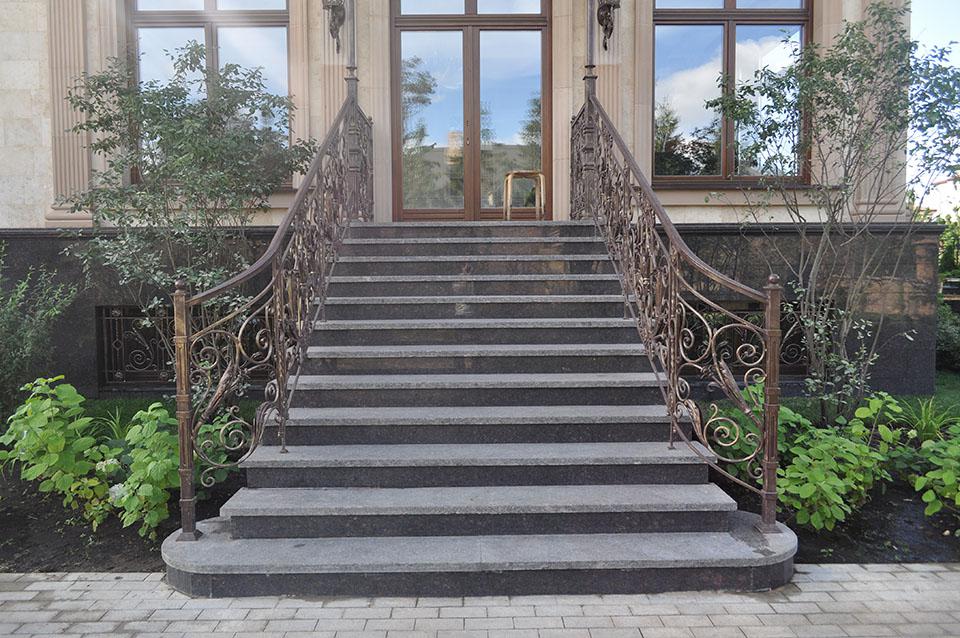 When it comes to marble or granite, it is often sold in the form of already polished slabs with machined ends. You just have to choose the optimal size elements. Marble Slabs mounted on a special adhesive, after which all joints are overwritten with a special grouting. Always choose moisture resistant elastic compounds. Especially when it comes to facing the outer staircase. ABOUT the benefits Natural stone finishes are probably not worth talking about. And to disadvantages only cold surface, high cost and considerable weight can be attributed.
When it comes to marble or granite, it is often sold in the form of already polished slabs with machined ends. You just have to choose the optimal size elements. Marble Slabs mounted on a special adhesive, after which all joints are overwritten with a special grouting. Always choose moisture resistant elastic compounds. Especially when it comes to facing the outer staircase. ABOUT the benefits Natural stone finishes are probably not worth talking about. And to disadvantages only cold surface, high cost and considerable weight can be attributed.
Concrete porch steps
Yes, yes, you were not mistaken. No matter how strange it may sound, but sometimes the most successful and durable way to finish the steps of the concrete porch is to lay special pads made of the same material. Some specialized organizations may offer such services. Typically, this method is chosen if the steps themselves are thin-walled and have a very uneven surface. So called concrete pads made by vibrocasting according to the size of the steps of the base. At the same time, various reinforcing additives are necessarily introduced into the concrete mixture, which subsequently significantly increases the strength of the finished product. In addition, concrete pads have the following advantages:
So called concrete pads made by vibrocasting according to the size of the steps of the base. At the same time, various reinforcing additives are necessarily introduced into the concrete mixture, which subsequently significantly increases the strength of the finished product. In addition, concrete pads have the following advantages:
- Provide a long service life due to the high rate of abrasion;
- They are frost-resistant;
- Often they already have a relief surface to provide an anti-slip effect;
- The relief pattern itself can be either standard or custom;
- They are already finished finishing material that does not require additional work.












